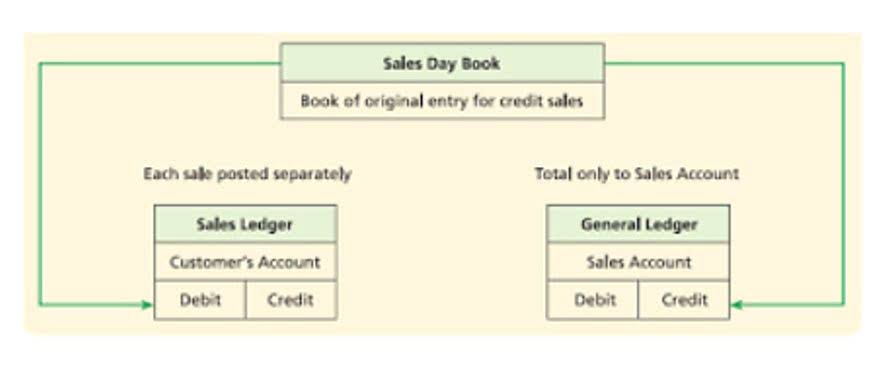
Leasing is a less expensive option for getting the equipment you need to fuel growth. Find places to trim extra expenses without sacrificing the office’s growth or quality of life. Poor AP management may strain relationships with vendors, making it more difficult to secure good terms when negotiating contracts. Get practical, strategic finance insights from those who’ve been there—straight to your inbox. See how AI-powered collaboration helps finance teams align faster and drive clarity, ownership, and action across the business. A country experiencing the outflow treats it as an unfavorable event and implements capital controls to restrict the outward movement of the capital.
Cash Advances for Expenditure-Driven Grants
If you are looking for a better understanding of your business’s financial stability, then this article is for you. Cash flow does not include what is there in the bank and the credit from suppliers. Cash flow is simply a measure of the cash that is entering your business or leaving your business during a certain period. Business cash flow is important to understand because important people such as investors and bank lenders use it to analyze the financial health of your business. Businesses must look into cash flow constantly because it shows whether you can purchase the inventory you require, pay taxes, pay salaries and wages, and pay operational costs.

What is negative cash flow?
- When capital leaves the country, more people sell their national currency and convert it to foreign currency.
- A healthy cash flow not only supports debt management, ensuring businesses can meet their obligations, but also strengthens the balance sheet.
- This article will also aid you in differentiating deferred outflows and assets as well as deferred inflows and liabilities (such as unearned revenues).
- This closing segment of a statement of cash flows shows the net cash flow as well as the opening and closing cash and cash equivalents.
- You may specify this inflow using the Water Year Method, the Read from File Method, or with an expression.
- Financing activities can create sudden increases or decreases in cash depending on whether you are borrowing or repaying money.
The designer adopted an upfront deposit policy of 30%, improved invoice clarity with detailed payment terms, and used an online payment platform to facilitate easier payments. These platforms automate much of the data entry by syncing with bank accounts, generating invoices, and tracking bills. Without regular review and discipline, expenses such as utility bills, office supplies, and travel costs can escalate unnoticed, reducing available cash.
Cash inflow and outflow: keeping tabs on your financial health

By reviewing your cash flow statement, you can identify areas where you may be overspending and find opportunities to increase your cash inflows. In this example, ABC Online Store had positive cash flows of $1,000 for the quarter ended March 31, 2023. The business had slightly more cash inflows than outflows during the quarter. Your cash flow statements record cash inflows with all its income activities or such strategies that add to your profit. A company’s cash outflows What is bookkeeping are debts, operating costs, and related liabilities that lead to payments and other expenditure.
- To have the benefit of a cash flow statement for important decision-making, the cash flow positions and their variants above need to be computed regularly.
- Managing cash outflow is critical to ensuring a business does not overspend and can meet its financial commitments.
- After all your expenses such as packaging, shipping, and costs of materials, are taken out, what remains is the operating cash flow for that period.
- Features often include dynamic cash flow projections, alerts for low cash balances, customizable dashboards, and tools to model the impact of changes in payment terms or sales volumes.
- In conclusion, understanding the difference between cash inflow and outflow is crucial for any business.
Is accounts payable a cash inflow or outflow?
- Adjusting prices seasonally to align with demand fluctuations allows businesses to capitalize on peak periods while remaining competitive during off-peak times.
- This might not be a deal-breaker for more established businesses, but many small businesses and new startups need to be very strategic about their cash flow at the beginning.
- It refers to the total amount of money moving in and out of a company within a specific period.
- By maintaining a current and detailed cash flow statement, businesses can anticipate spending trends and strategize for future growth.
Cash inflow is the cash you’re bringing into your business, while cash outflow is the money that’s being distributed by your business. Conversely, cash outflow represents the funds leaving your business, including expenses like purchasing supplies and paying wages. Despite the simplicity of this distinction, the underlying factors that separate inflow from outflow are complex.
Facilitates liquidity management

Financing cash flow can be positive or negative, depending on whether a company is raising more cash than it is spending on debt and equity transactions. Having a strong grasp of cash flow is essential for running a successful business. Understanding the differences between cash inflow and cash outflow, and how to manage both effectively, is critical for managing your business finances with confidence. In the world of stock trading and investing, two important concepts that every investor should understand are inflow and outflow. These terms are commonly used to describe the movement of money or capital into and out of the stock market.
- Having a positive cash flow enables you to settle debts and pay dividends to investors.
- Many businesses, especially small and medium-sized ones, struggle to maintain steady and predictable inflows of cash.
- It’s essential to know your operating cash flows because those appear on your company’s cash flow statement and other financial statements.
- The most basic form of cash flow reporting is the standard cash flow statement (or statement of cash flows).
- Moomoo makes no representation or warranty as to its adequacy, completeness, accuracy or timeliness for any particular purpose of the above content.

On the other hand, cash outflows dictate how much money must be invested as a result of those operations. How to Run Payroll for Restaurants Common outflows include payments for goods/services, taxes, wages, loan repayments, and more. Cash inflow encompasses all revenue generated through your business’s operational activities—essentially, any strategy aimed at routing profits to your business. A robust cash inflow is indispensable for keeping your business buoyant, facilitating reinvestment, and covering the spectrum of operating expenses. Maintaining a positive balance between the money coming in and going out of your business is essential for ensuring long-term viability and success.
The Impact of Cash Flow on Business Growth
Receiving cash from these types of investments allows organizations to quickly reinvest it internally or externally for further gains. A company’s source(s) of financing also influences its short-term cash requirements which ultimately impacts its ability to pay back liabilities quicker than expected. During a cash flow analysis, the FP&A team evaluates how much money will be available to support business operations. They assess a company’s ability to pay off both short-term and long-term debt obligations.
Moreover, you might have a negative cash flow because you have invested a large amount of cash recently in a machine that can eventually cut costs. But that isn’t necessarily a bad thing immediately because you will get a return on investment soon. A company’s inflow and outflow are a function of a mix of activities that result from its business operations. To have the benefit of a cash flow statement for important decision-making, the cash flow positions and their variants above need to be computed regularly.
What is Inflow and Outflow in Stocks?
Investing activities can help steer your business to maintain positive cash flows. The common examples are futures, stocks in valuable cash inflow vs outflow entities, and intangible assets, among others. A healthy mix of this set of activities can help you grow your cash flow and safeguard steady cash inflows when most needed. In summary, cash outflows and cash inflows are two important concepts in managing your business’s cash flow.